As office environments shift to remote work, we are encountering a variety of new technology requirements with the PCs and notebooks that our staff uses every day to deliver superior design to our clients and partners. We recently encountered a need where an employee needed a new workstation PC specifically geared to deliver the best possible performance on one of our most frequently used applications. With this in mind, we set out to build the best computer for architects and interior designers in a semi-portable configuration.
Our primary need is a computer that runs Autodesk Revit as fast and smoothly as possible. Revit is a building information modeling (BIM) software for architects, engineers, designers, and contractors.
While our primary goal was the best possible performance running Revit, we also wanted to achieve the following “nice to have” objectives –
- Portable or Semi-Portable – With changing work arrangements, we wanted to design a PC that can be moved relatively easily between our corporate offices and employee home offices.
- Multi-Monitor Support – We wanted to be able to run 2-4 monitors to have as much screen real estate as possible.
- A Price Point of $2k – If the value/performance is there, this price point is flexible, but we believed we could get this done for less than $2k (excluding peripherals like monitors, keyboards, etc.).
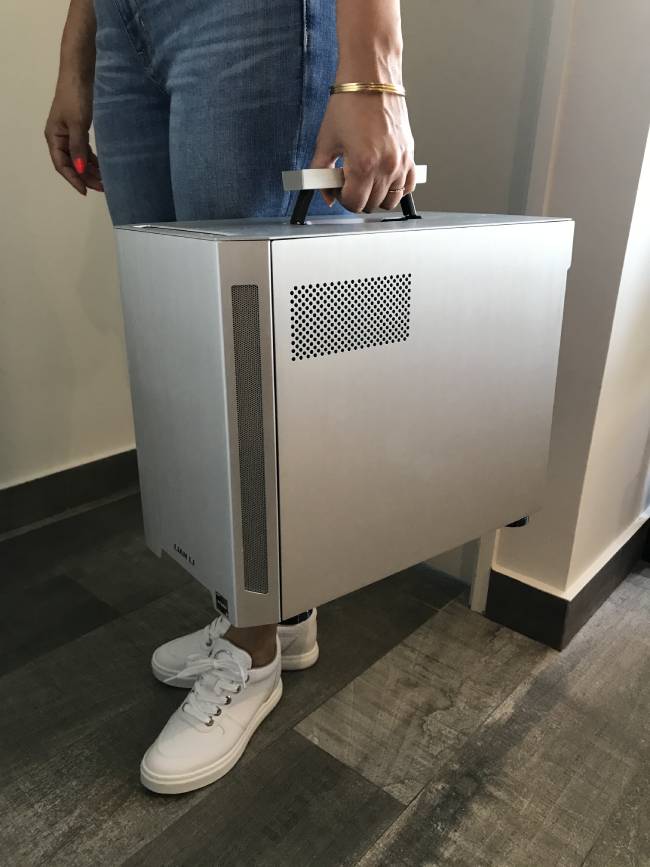
Why a laptop was not the best choice for this architect computer.
The obvious choice in today’s business environment is to get a powerful business laptop or notebook. However, our thoughts for this project deviated from the norm on this because we really wanted to focus on Revit performance. It is a challenge to find a laptop that truly delivers the performance that an application like Revit could use for large, complex models. Also, we have had some challenges in the past with our go-to notebook, Microsoft’s Surface Pro 3, due to overheating from the battery and CPU.
If you examine the Autodesk’s software requirements and recommendations for Revit, it tells you in no uncertain terms where to allocate your budget when building your ideal architect PC –
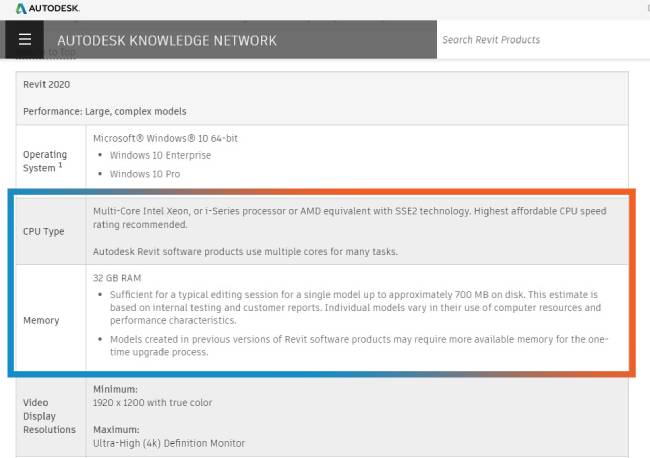
We need a computer that can handle the heat!
Per the software developer’s own recommendations, we needed the fastest and most powerful multi-core processor as our budget allows. This is where the difficulty with a laptop arises. The more powerful the processor (or CPU), the more heat computer will generate. When it comes to heat, a laptop presents a challenge, as cooling systems are bulky and need a fair amount of physical space. Modern laptops are a marvel of engineering, but there are tradeoffs when it comes to performance. Specifically, it is much harder to keep a laptop cool when running powerful hardware, when compared to the cooling capabilities of a desktop PC.
Highest affordable CPU speed rating recommended. Autodesk Revit software products use multiple cores for many tasks.
– Revit Software Specifications
If we look at the top tier of Surface Pro laptops available, they are running an Intel® Core™ i7-1065G7 processor. While these machines are amazing in their own right, the power and cooling restrictions of a mobile processor are evident. Specifically, we are getting 4 cores – certainly enough for most office-oriented tasks. However, we are building a Revit powerhouse here, and we want more than the 4 cores we can get in today’s high-end laptops.
Where can you buy a semi-portable desktop PC?
Desktop PCs come in various sizes. Normally, the size of the PC is most evident in the case (or the chassis). To create a high performance, semi-portable architect PC, we can use a Mini-ITX case that gives us access to the most powerful tier of computer components, while still having a PC that is the size of a large handbag. Make no mistake, this is a desktop PC, and not intended to be brought to a coffee shop to write that screenplay. However, the built in handle makes it portable enough to move between offices on occasion.
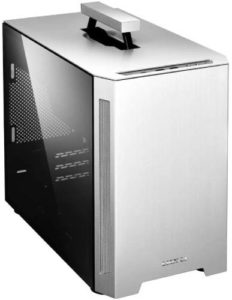
We ended up building our own PC.
If you’re not familiar with building a PC, it is actually an enjoyable way to get amazing computer performance without too much difficulty. Furthermore, by buying the individual computer components individually, you are saving a lot of money when compared to how much a machine like this would cost if you were buying a ready to use PC. You simply order all the parts and spend an afternoon (or two) going through the various manuals and guides to assemble it all. Here is the list of the components we eventually went with –
We were able to meet our objectives and build a Revit PC powerhouse for under $1,700.
What are the components that we chose for our architecture/interior design computer?
CPU – AMD Ryzen 9 3950X
This is an incredible 16 core processor that can really unleash the full capabilities of Revit in a smooth, snappy, and efficient way. We work with massive Revit builds, and the performance difference is clearly evident. For example, synching a series of design edits with the master Revit file stored in the cloud could be a 5-10 minute process. With this CPU, we can get it done in a couple of minutes or less, depending on the file size.
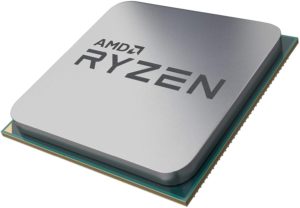
CPU Cooler – Silverstone PF120 Liquid Cooler
The AMD Ryzen 3950X doesn’t come with any kind of CPU cooler. This CPU’s 16 cores produce a ton of heat. The box from AMD recommends a liquid cooling system. The Silverstone PF120 accomplishes this while maintaining a compact form that fits nicely in our mini-ITX case. Liquid cooling may sound a bit intimidating, but it really just means there is a small pump connected to a radiator via some hoses. You don’t need to be pouring water into your PC or worry about spilling liquid or anything like that.
Memory – Patriot Viper 4 Blackout 64GB
As modern office multitaskers can attest, RAM is important these days. You have tons of Google Chrome tabs open, along with Revit, Bluebeam, Sketchup, etc. and you start to see your PC get hung up on basic clicks and operations. RAM really isn’t that expensive, so we prefer to max it out whenever possible. The motherboard we are using is the smaller mini-ITX design, and it only has two RAM slots. Thus, we needed to put 32GB in each to arrive at a total of 64GB of RAM in this powerhouse architect PC.
Storage (Hard drive) – Sabrent Rocket 500 GB
We only have 500GB of file storage in this machine as most of our files are stored in the cloud. We don’t need to worry so much about local storage on our PC. However, if you like holding big files on your machine, you would probably want to do something else here – like a 1 TB Solid State Drive (SSD).
Video Card – Gigabyte GeForce GTX 1650
We have a relatively basic video card in this PC. We were somewhat surprised when researching the software we run as architects that the video card is not heavily used. Note that we would want to invest more in this GPU if we were doing more renderings, but presently this is not a priority. We really just wanted a graphics card that fits in the mini-ITX case, as well as has plenty of fans to keep our CPU cool. Cooling is important for every component in this system. This card gives us the ability to have up to 3 monitors for this computer. We can’t use the HDMI ports on the motherboard because our CPU does not have an integrated graphics card.
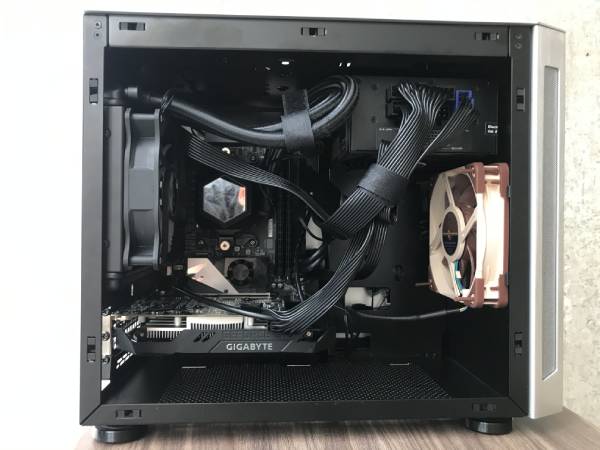
What were the results?
Our employee has been using this Revit powerhouse PC that we designed to be the best semi-portable architect computer for a few weeks now. We are thrilled with the initial results. Cumbersome load times and tedious file size limitations are a thing of the past!
For example, would frequently encounter the need to edit a portion of the building’s design in Revit, and then sync the updates with the master file stored in the cloud. This sync could take several minutes. Thus, we will avoid doing this sync until we absolutely need to, as it basically results in a work stoppage. This creates the risk of losing a lot of progress if we don’t sync enough (the “forgot to save my work” risk applies here). Basically, the ability to run syncs more frequently improves our productivity greatly.
Also, we really see the difference in performance when we work with massive PDFs of architectural drawings. Previously, we would need to break apart massive PDF master files, redline on a specific drawing set, then recompile the files. With this PC’s 64GB of RAM, we can work with enormous files without delay or difficulty.

